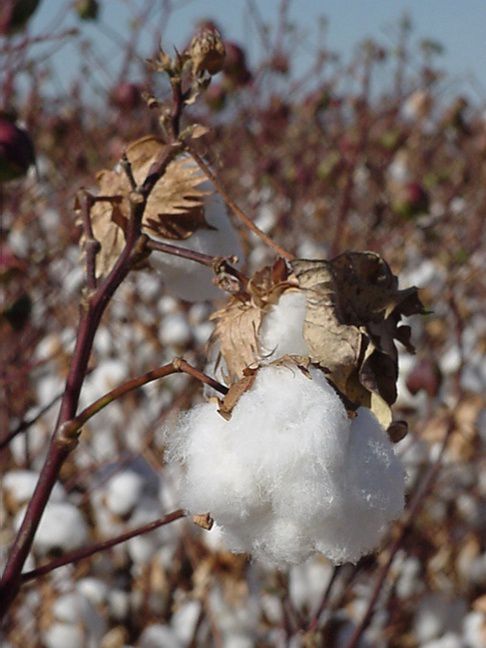Arizona Agriculture in High Cotton!
Published
9/25/2013
By Julie Murphree, Arizona Farm Bureau: The height of the Arizona cotton harvest is just around the corner and some Arizona farmers have begun to prepare equipment if not begin the harvest season which will run

According to the United States Department of Agriculture’s (USDA) National Agricultural Statistics Service (NASS), 90% of cotton bolls in Arizona are open. They’re ready for our cotton pickers!
NASS also says that this year’s cotton crop overall conditions continues to be rated mostly good to excellent, depending on location.
Arizona cotton farmer Dan Thelander of Maricopa County has good things to say about this important
All this despite the fact that American cotton farmers planted less cotton this year. USDA’s June Acreage Report showed U.S. producers planted 10.25 million acres of cotton this year, down 16.8% from the previous year. Upland cotton (sort staple) reported 10.03 million acres in the report, down 17% from 2012 while extra-long staple (ELS) planted 226,000 acres, a 5.2% decrease.
USDA’s June projection is up 225,000 acres from their initial 2013 estimate released in March.
On a regional basis, upland area in the Southeast is down 8.1 percent to 2.53 million acres. Relative to 2012, only Florida and Georgia saw an increase in plantings.
The National Cotton Council’s planting intentions survey, released in last February; indicated U.S. farmers intended to plant 8.81 million acres of upland cotton and 203,000 acres of ELS.
In the West, California cotton farmers planted 120,000 acres of upland cotton, down 15.5% from last year. Arizona and New Mexico planted 170,000 (-15% from the previous year) and 30,000 acres, respectively.
Remember these fun facts about Cotton
- Cotton seeds are tough enough to survive travel across oceans on the wind. This could explain how botanists are not sure where the first cotton plants came from, and probably why similar varieties grow sometimes thousands of miles apart. But it does explain why the Hohokam Indian tribe was growing it thousands of years ago here in the southwest.
- Even though cotton is over 5,000 years old, the people who grew and used it never came in contact with each other. Some of them even lived on different sides of an ocean, but astonishingly enough, they still managed to develop similar tools to clean, prepare, spin, and weave it.
- Despite its well-earned reputation
of casual comfort, the actual word "cotton" is an English version of the Arabic "qutun " or "kutun ," a generic term meaning fancy fabric. One of cotton's original popular names was "vegetable wool." - The American South owes its success in the peanut growing industry to cotton---sort of. The boll weevil created an economic crisis all over the American South by laying its eggs in the cotton bolls, destroying much of the crops in the process. Enterprise, Alabama cotton farmers watched this helplessly until someone suggested they try growing peanuts instead, which is now one of their most successful crop products! In the meantime, a boll weevil eradication program has nearly wiped out the little pest.
- Cotton was originally not only grown in
white, but assorted other colors including brown, rust and light purple. When mechanical processing methods (think the Industrial Age)were introduced it was easier to maintain color consistency by using only white-fibered plants. - Arizona cotton, along with California cotton, is some of the whitest, highest-quality cotton around. One main reason is that Arizona and California irrigate the cotton. With so little rainfall in the southwest, the cotton fiber is not at risk for compromised quality due to wind and rain.
- One of the finest extra-long staple (ELS)
cottons was developed and grown right here in Arizona. The USDA in Sacaton, Arizona, had an ELS breeding program that helped develop the ELS cotton.
It’s going to be a great cotton harvest!
Join our Family!